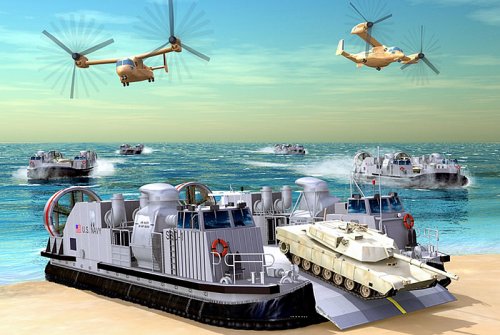"Textron Starts Work on New Navy Hovercraft"
By: Sam LaGrone
Published: November 18, 2014 7:58 AM • Updated: November 18, 2014 7:58 AM
Source:
http://news.usni.org/2014/11/18/textron-starts-work-new-navy-hovercraft
By: Sam LaGrone
Published: November 18, 2014 7:58 AM • Updated: November 18, 2014 7:58 AM
Source:
http://news.usni.org/2014/11/18/textron-starts-work-new-navy-hovercraft
Work started Monday on the first of 73 planned hovercraft slated to replace the service’s aging Landing Craft Air Cushion (LCAC) landing craft, Naval Sea Systems Command announced.
The first of nine initial Ship to Shore Connector (SSC) began fabrication in Textron’s facility in New Orleans, La. in what’s slated to be a $4.07 billion program.
“It’s an exciting time. Starting production on this next generation Landing Craft, Air Cushion (LCAC) is a significant milestone for the Navy and Marine Corps,” said Capt. Chris Mercer, Program Executive Office Ships program manager for Amphibious Warfare in a Monday NAVSEA statement.
“The craft benefits from a mature design and sound production process, paving the way for many more craft to follow. Once delivered, these craft will fill a critical need to recapitalize the Navy’s surface connectors.”
The Navy currently operates a fleet of 81 LCACs first introduced into the service in 1986.
“The SSC will be a high-speed, fully amphibious landing craft capable of carrying a 74-ton payload traveling at speeds of more than 35 knots. An enclosed personnel transport module can be loaded aboard that can hold up to 145 combat-equipped Marines or 108 casualty personnel,” according to NAVSEA.
“The SSC will incorporate an improved skirt design, the advanced skirt, in place of the LCAC’s deep skirt, reducing drag and craft weight.”
The first SSC delivers in 2017 and will have an initial operating capability (IOC) in 2020.
The Navy and Marine Corps want the SSC to be able to deploy the Marine’s developing Amphibious Combat Vehicle (ACV) concept at sea as a complimentary capability to the current Amphibious Assault Vehicle (AAV).



